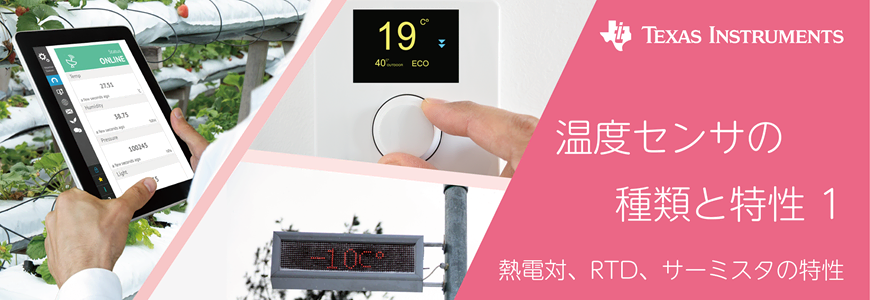For those who are interested in semiconductor temperature sensors but do not know what they are, we will introduce the features of conventional temperature sensors and the differences between semiconductor temperature sensors in a total of three articles.
Types and Characteristics of Temperature Sensor Series
Part 1 Characteristics of thermocouples, RTDs, and thermistors
Part 2 What is a semiconductor temperature sensor?
Part 3: Application Examples of Semiconductor Temperature Sensors
In Part 1, we will introduce the temperature characteristics of thermocouples, platinum resistors, and thermistors.
Thermocouple temperature characteristics
A thermocouple is a device in which two dissimilar metals are brought into contact on one side, and the temperature of the contact area is measured by the potential difference that appears on the other side. The measurable temperature range varies depending on the type of metal that is in contact. There are Japanese Industrial Standards for thermocouples, and the following eight types are representative.
| type | Constituent material | |
| + pole (leg) | - Poles (legs) | |
| B | Platinum/Rhodium (30%) | Platinum/Rhodium (6%) |
| R | Platinum/Rhodium (13%) | platinum |
| S | Platinum/Rhodium (10%) | platinum |
| N | Nicrosil | nisir |
| K. | Chromel | Armel |
| E | Chromel | constantan |
| J | iron | constantan |
| T | copper | constantan |
Reference page: http://www.jisc.go.jp/index.html (JISC1602)
Thermocouple types and temperature characteristics
If you graph the eight types of thermocouples introduced earlier based on the measurable temperature and the "electromotive force", which is the driving force that causes the current to flow through the circuit, you can see that they have the characteristics shown in the figure below.
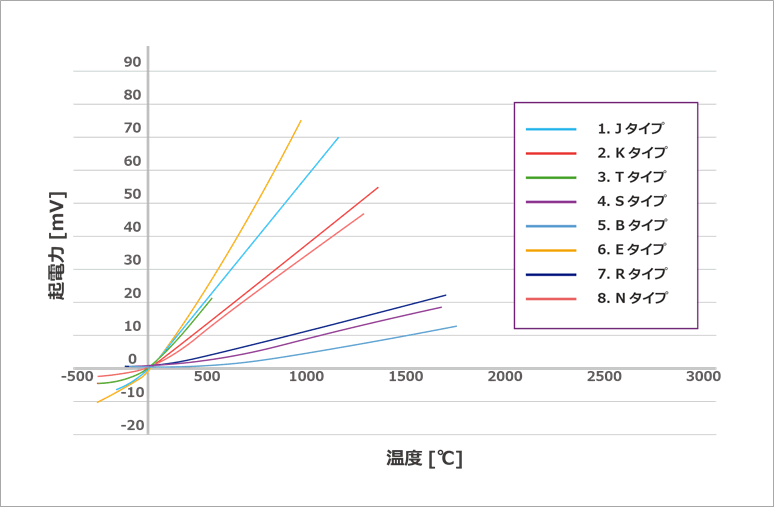
Some are slightly curved, while others are neatly straight, but the measurable temperature range also varies. What they have in common is that the electromotive force is 0 mV at a temperature of 0°C. This is due to the addition of a correction called "cold junction compensation".
What is "Reference Junction Compensation"?
First, I have prepared a diagram for explanation about temperature measurement using a thermocouple, so please take a look here.
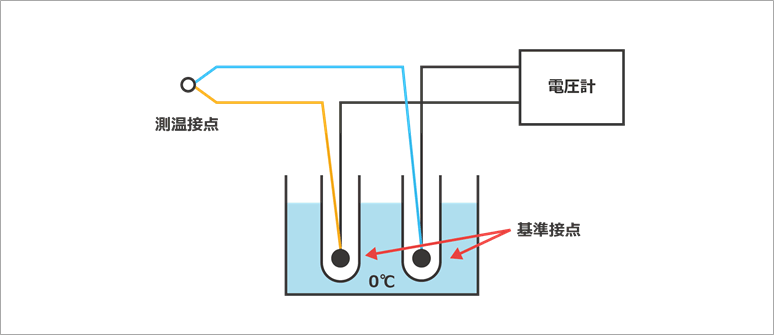
A thermocouple is a device that measures the temperature of the contact area by contacting one side of two dissimilar metals and measuring the potential difference that appears on the other side. The part where two dissimilar metals come into contact is called the "temperature measuring junction," and the point of contact between the metal and the measuring instrument is called the "reference junction (cold junction)."
Thermocouple measurement basically converts the temperature of the measuring junction by measuring the voltage between the reference junctions when the reference junction is at 0°C. This is called "cold junction compensation".
However, I don't think there are basically any thermocouple products that have a circuit that keeps the reference junction at 0°C by installing a Peltier element or the like inside. Therefore, it is necessary to measure the temperature of the thermocouple connection part (terminal block, etc.) on the circuit board at the same time and perform correction based on the temperature. This compensation is called "reference junction compensation".
An example of a thermocouple circuit using a platinum resistor and its temperature characteristics
The following diagram is provided as an example of a thermocouple input circuit.
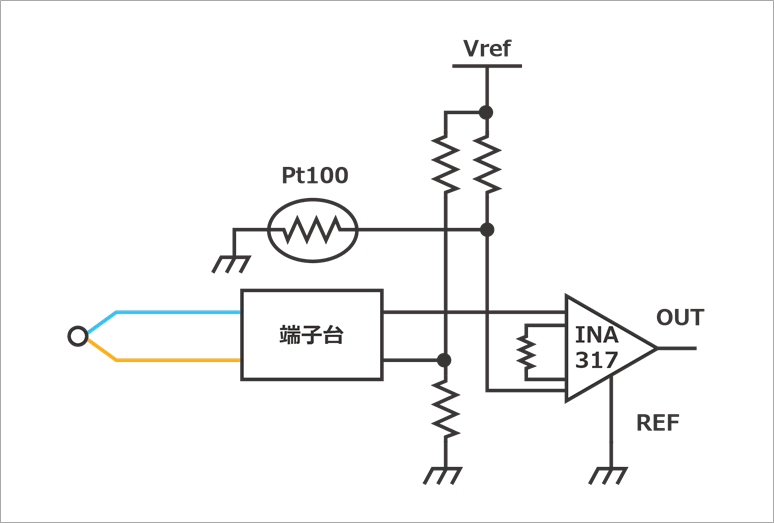
I think it is common to use a high-precision resistor, a high-precision reference voltage (Vref), and a platinum resistor (Pt100) for reference junction compensation. Pt100 has very good linearity and is widely used for accurate temperature measurement. By the way, the name "Pt100" comes from "100Ω at 0℃".
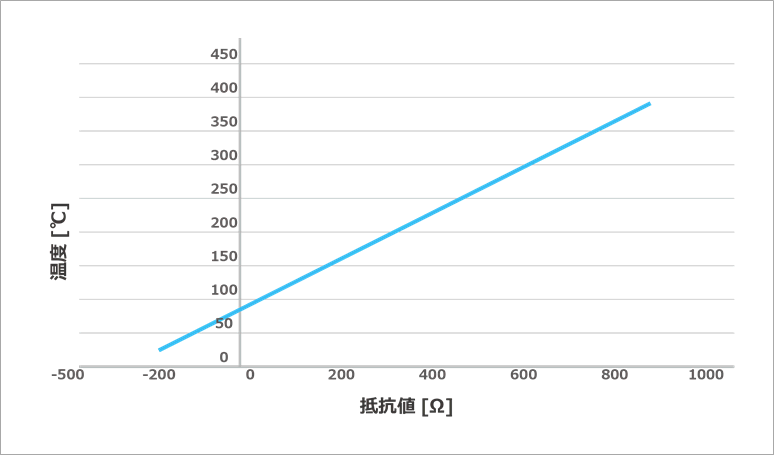
However, Pt100 is quite expensive because the material is platinum. Therefore, thermistors are often used in inexpensive temperature measurement circuits.
Thermistor temperature characteristics
A thermistor changes its resistance value due to heat, and there are two ways to change it.
- As the temperature rises, the resistance decreases → NTC (Negative Temperature Coefficient)
- As the temperature rises, the resistance rises → PTC (Positive Temperature Coefficient)
The thermistor temperature characteristics are shown below.
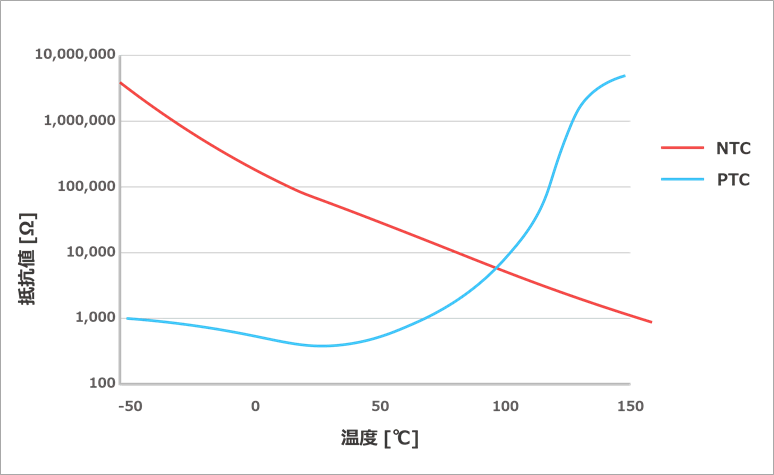
The temperature characteristic of the thermistor is that the resistance value changes significantly in the range of 0°C to 100°C, making it easier to clearly detect temperature changes than other temperature sensor devices.
NTC is commonly used for temperature measurement
There is a difference in the characteristic curve between NTC and PTC. The NTC changes slowly, while the PTC changes sharply after reaching a certain temperature. NTC is commonly used for temperature measurement.
However, if you look closely, its characteristics are not linear, unlike platinum resistors. Furthermore, since it is basically a resistor, self-heating cannot be avoided, and hysteresis appears in the resistance value, which causes errors.
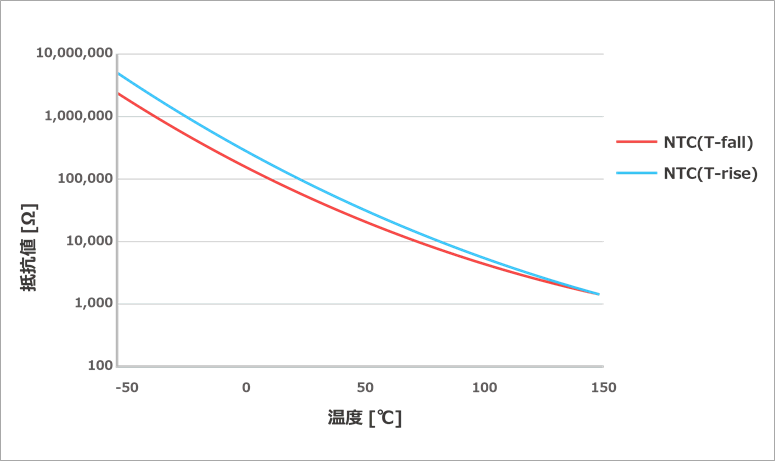
Are thermocouple circuits using RTDs like platinum resistors and thermistors expensive?
Elements that change their resistance value according to their own temperature, such as platinum resistors such as Pt100 and thermistors, are called RTDs (Resistance Temperature Detectors). In addition, temperature measurement using a thermocouple requires the following four items in addition to the thermocouple, so it is obvious that the circuit cost will increase.
Items required for temperature measurement other than thermocouples
- RTD (platinum resistor, thermistor)
- Precision fixed resistor (for voltage division with RTD)
- Precision reference voltage source (for biasing RTDs)
- Precision AFE (op amps and A/D converters)
Inexpensive semiconductor temperature sensors are recommended to keep costs down
Summarizing the above, we learned that "Pt100 is highly accurate but expensive" and "Thermistors are inexpensive but have large errors." Also, an RTD uses a large number of components, resulting in a complicated circuit and a large mounting area.
In order to solve these problems, we recommend the "semiconductor temperature sensor", which already includes the four necessary items in addition to the thermocouple.
Next time, I will introduce semiconductor temperature sensors.
Continued on Part 2: What is a semiconductor temperature sensor?
Click here for recommended articles/materials
Types and Characteristics of Temperature Sensor Series
Part 1 Characteristics of thermocouples, RTDs, and thermistors
Part 2 What is a semiconductor temperature sensor?
Part 3: Application Examples of Semiconductor Temperature Sensors
What is a sensor? Basic knowledge for digitization and IoT

